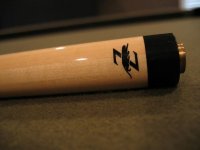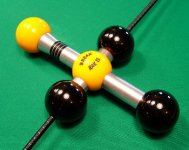Accessories
No matter what you shoot with, you'll need a sturdy tripod and or monopod. I only use Bogen Manfrotto. DO NOT use the generic Quantaray available in Wolf/Ritz Camera stores. They will not last.
I know people who use Quantaray lenses, which are really Sigma lenses with a different name. If you're looking to save money, it's your way to go. I don't use them because I'm a label snob. I'm not familiar with their flashes. You will need one eventually, as any built-in flash isn't really good for anything.
I prefer Cokin filters, which are interchangeable with my various lenses. I have screw on filters, but I rarely use them. You will need at least two: a UV filter and a Circular Polariser. The UV filter is basically for protection. If you drop your lens, it's much cheaper to replace a cracked filter than your lens. A circular polariser, among other things, can darken the sky, remove reflections from water and glass, and make foliage appear less shiny. Colour saturation is also significantly enhanced. It is the only filter for use with colour film that can do all of this.
You will need to protect your equipment. I have a locked stainless steel case with foam packing. When purchasing a camera bag, make sure it's sturdy (not flimsy) and has seperate sections for the body, lenses, and flash. You'll also want pockets for lens tissue, film, and filters you want to carry. Lowepro and Tamrac are probably the most popular. If you want a hard case, try Halliburton.
Wolf/Ritz Camera offers a great extended warranty on their cameras and it's definitely worth the extra money. I normally don't believe in these, but you could drop your camera off a building or in a lake, just bring them back the pieces and if it's not repairable, they'll replace it. Also, I know Nikon doesn't cover water damage but Wolf/Ritz Camera's extended warranty does. To my knowledge, there is no deductable. At least cover the body of your camera. Cameras today are pretty much little computers, and if it breaks, it'll be cheaper to replace it than fix any problem that arises.
A great place to shop is
B&H Photo, whether you're looking for photo or video equipment. They also carry some used equipment.
Do not use eBay for camera purchases. If something happens to your camera, your options are limited. If you're on a limited budget, B & H Photo carries some used equipment.
Hope this helps





